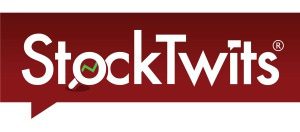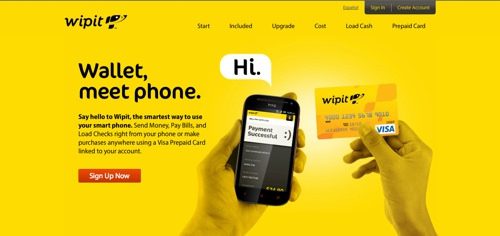 By most measures, Y Combinator (YC) is far and away the most important incubator in the technology space. Graduating from there is like facing the job market with a resume boasting summer internships at Google, Facebook AND Goldman Sachs. You are almost guaranteed a multi-million funding.
By most measures, Y Combinator (YC) is far and away the most important incubator in the technology space. Graduating from there is like facing the job market with a resume boasting summer internships at Google, Facebook AND Goldman Sachs. You are almost guaranteed a multi-million funding.
Fintech (note 1) has been part of YC from the beginning. The first class (Summer 2005) included one fintech startup, TextPayMe, among the eight companies. TextPayMe was acquired shortly thereafter by Amazon for a rumored $3 million.
But as YC grew from 2005 to 2009, the number of fintech companies stayed at roughly 1 per year. During those five years, YC graduated 5 fintech companies out of a total of 139 (3.5%). Suddenly in 2010, the fintech number grew dramatically, average of more than 7 per year. During the past 4.5 years, there have been 35 fintech startups out of a total of 406 (8.6%) (see note 2).
Table: YC Fintech Companies by Year
| Class |
Total Companies |
# Fintech Companies |
% Fintech |
| 2014 (half year) |
56 |
5 |
9% |
| 2013 |
83 |
9 |
9% |
| 2012 |
117 |
8 |
7% |
| 2011 |
89 |
7 |
8% |
| 2010 |
61 |
6 |
10% |
| 2009 |
39 |
1 |
3% |
| 2008 |
43 |
1 |
2% |
| 2007 |
32 |
2 |
6% |
| 2006 |
17 |
0 |
0% |
| 2005 |
8 |
1 |
13% |
| Total |
545 |
40 |
7.4% |
Source: Y-Combinator (yclist.com), Finovate analysis
(see note 1 for Fintech definition)
_________________________________________
List of fintech YC alums by year
_________________________________________
2014 (Winter class only)
Abacus
abacus.com
Say goodbye to expense reports.
TradeBlock
http://tradeblock.com
Digital currency data and analysis. TradeBlock’s digital currency tools and research are trusted by hundreds of thousands of traders and enthusiasts across the globe.
Two Tap
http://twotap.com
Users can now order any product directly in your app with Two Tap.
Zidisha
http://www.zidisha.org
We are pioneering the first online microlending community to connect lenders and borrowers directly across international borders – overcoming previously insurmountable barriers of geography, wealth and circumstance.
Zinc
http://www.zincsave.com
Zinc is the best way to buy. Pay with with Dwolla or Bitcoin, and manage all your orders in one place.
2013
Buttercoin
http://buttercoin.com
Trade bitcoin with ease.
PayTango
http://www.paytango.com
PayTango links the cards in your wallet to your fingerprints.
RealCrowd
http://realcrowd.com
Featured investments available for funding.
SimplyInsured
http://www.simplyinsured.com
Simple health insurance for small businesses.
Standard Treasury
http://standardtreasury.com
APIs for commercial banks.
Swish
http://www.swish.com
Swish is a dynamic, specialized mobile payment company that has developed a ground breaking new card reader and application which provides a complete mobile point of sale solution to any size business.
True Link Financial
http://www.truelinkcard.com
We keep a watchful eye out for fraud and spending mishaps so you can spend your time doing what matters.
WeFunder
https://wefunder.com
We aim to give everyone – regardless of wealth – the opportunity to invest in startups.
Zenefits
http://www.zenefits.com
Zenefits runs your benefits, so you can run your business. Get affordable benefits for your company in minutes. Then set and forget them.
2012
Airbrite
http://airbritelabs.com
Exited
Airbrite is a cloud-enabled platform that powers mobile commerce We are the next generation of e-commerce. Our mobile-firs
t API powers modern shopping.
Coinbase
http://coinbase.com
Your Hosted Bitcoin Wallet. Coinbase is the easiest way to get started with Bitcoin.
Crowdtilt
http://www.crowdtilt.com
Crowdtilt allows users to pool funds for objectives in a simple, social, and frictionless way online.
Eligible
eligibleapi.com
Real Time Eligibility Checks for Health Insurance.
FundersClub
thefundersclub.com
FundersClub is a web service that gives investors unprecedented access to investment opportunities and the tools to review and invest online with ease and speed.
LendUp
lendup.com
LendUp is reinventing the payday lending industry
SmartAsset
http://www.smartasset.com
SmartAsset makes life’s biggest decisions easier by bringing full transparency to the financial decision making process.
ZenPayroll
http://zenpayroll.com
We are creating beautiful, modern payroll.
2011
DebtEye
http://www.debteye.com
We are an automated credit counseling solution to help customers get out of debt, a little like a “turbo tax” for those who need debt relief.
Giftrocket
http://www.giftrocket.com
GiftRocket sells a new type of gift card that works at any location.
GoCardless
https://gocardless.com
GoCardless is a UK-based service that allows smaller merchants to easily set up interbank transfers for customers.
Leaky
http://leaky.com
Leaky helps consumers make better decisions about insurance.
OrderAhead
http://orderaheadapp.com
OrderAhead is the easiest way to order from local merchants on your phone.
TrustEgg
http://trustegg.com
The simplest way to save for a child’s future.
SwipeGood
https://swipegood.com
SwipeGood allows users to enroll their credit or debit cards and automatically round up every purchase to the nearest dollar for charity.
2010
CardPool
http://www.cardpool.com
EXITED
Cardpool is a gift card exchange marketplace where anybody can buy, sell, or trade their new or pre-owned gift cards.
E la Carte
http://elacarte.com
E la Carte develops tablets for restaurant tables so guests can order, pay and play games from their seats
FutureAdvisor
https://www.futureadvisor.com
FutureAdvisor was founded in 2010 on the premise that investing for your future does not have to be difficult or expensive.
Indinero
http://indinero.com
Accounting, taxes & payroll. One solution. inDinero is your company’s accounting department.
ReadyForZero
https://www.readyforzero.com
ReadyForZero creates online financial software that helps people control and reduce debt.
Stripe
https://stripe.com
Stripe is a simple, developer-friendly way to accept payments online.
2009
WePay
https://www.wepay.com
WePay is an online payments platform for individuals, organizations, and businesses.
2008
Tipjoy
DEAD
Tipjoy was a simple, social payments engine that allows merchants to sell digital content and features, charities to raise money for causes, and individuals to give money to one another.
2007
Buxfer
http://www.buxfer.com
Buxfer is the next-generation personal finance solution, taking money management to the web.
SocialPicks
http://www.socialpicks.com
EXITED
SocialPicks provides individual investors with a trusted online investing community where they can invest smarter together.
2005
TextPayMe
http://www.textpayme.com
EXITED
TextPayMe was an SMS payment service that lets you send money to other people using cell phone text messaging.
—————————
Note:
1. We are using a broad definition of fintech including payments, insurance, investments, gift cards and even a few that are ecommerce focused such as E la Carte which is an order entry and payments play for restaurants.
2. Some YC companies are in stealth mode, so this public list is not 100% complete.
 Fiserv and DBS win Asian Banker Technology Implementation award.
Fiserv and DBS win Asian Banker Technology Implementation award.














 TransferWise
TransferWise